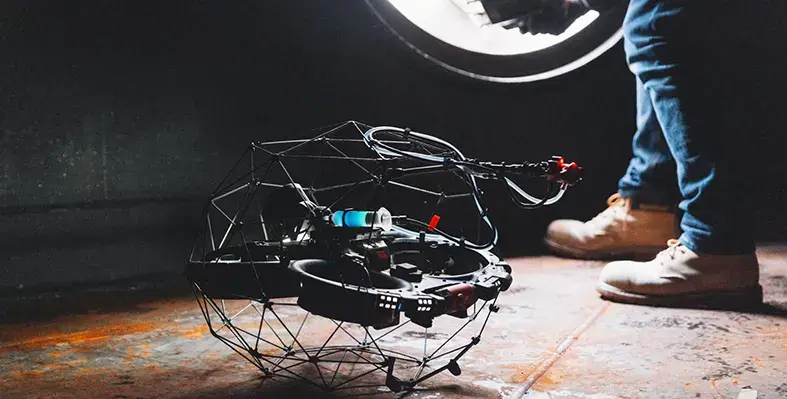Are we ready to see drones in the oil and gas sector? Flyability discusses the potential applications
Any oil and gas facility faces an array of challenges – from working with flammable material to managing tight deadlines and high-pressure shutdowns. Drones are being proposed as a means to make work easier. So what can they offer the oil and gas sector?
The answer lies in safer, faster, and cheaper non-destructive testing. We’ve been seeing a steady rise in outdoor drone applications for inspections. Now, drones are advancing beyond visual inspections into non-destructive testing. This isn’t limited to the exterior of assets either – they’re flying indoors too.
The Swiss-designed Elios 3 is one example of an oil and gas drone. This remote inspection UAV was the winner of the Safety Award at the 2025 Offshore Support Journal conference in London. The Elios 3 is a confined space drone that features a protective cage and custom firmware that allows it to recognize and recover from collisions – perfect for flying indoors. The drone can be used to gather visual, LiDAR, and ultrasonic thickness measurements simultaneously, in addition to a low explosive level gas sensor calibrated for over 14 flammable gases. As it flies, the Elios 3 creates a 3D model of its surroundings that localises all of the UT measurements and points of interest captured by the camera. This means that post-flight, engineers can navigate a 3D point cloud of the asset and see where each measurement was taken, making it easy to locate defects and plan repair work.
Industry-wide change
As with any new technology, investors want to see results before committing to innovation. The numbers behind the Elios 3 offer little doubt: this technology is well-placed and ready to bring about real industry-wide change. In one case, UK-based service provider CyberHawk used the Elios 3 and its UTM probe and managed to save US$600,000 on cargo oil tank inspections. In another example, Turner Specialty Services saved 60% on pipe rack inspections measuring 2,000 feet (600 meters), completing the inspection on an oil and gas site in just 2 days.
Another reason for the growing interest in drone technology is the rate of development. As we advance towards more advanced AI and autonomous capabilities, drones are evolving too. For example, the Elios 3 has a Smart Return-to-Home feature that, when triggered by the pilot, allows it to select the fastest and safest route back to the home point. The tool works by using onboard autonomy engines to analyze the environment and plan the best route. This means that pilots can focus on gathering critical data while the drone manages its battery life and plans the home route. The manufacturer of the Elios 3, Flyability, also teases future developments that will take advantage of autonomy, such as “Resume Inspection”, where the drone will autonomously return to the point where Smart Return-to-Home was triggered to continue an inspection after batteries have been changed.
Drones are here to stay
So what does this mean for the wider industry? That drones not only have a place in the sector but are here to stay. Drone-based NDT inspections are offering improved safety, access, and reporting simultaneously. Multiple class societies have certified data collected with the Elios 3 UT, signaling industry-wide acceptance while the drone has received multiple awards commending the safety improvements it empowers. The technology is ready for the industry – it’s just a question of who will adopt it fastest.









